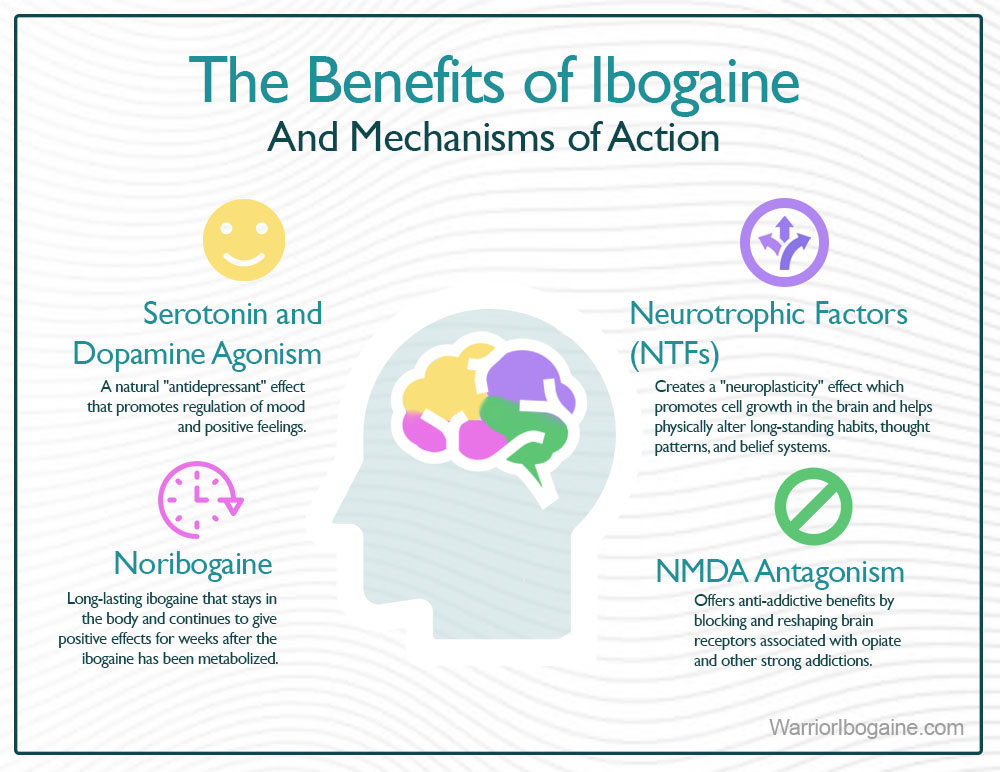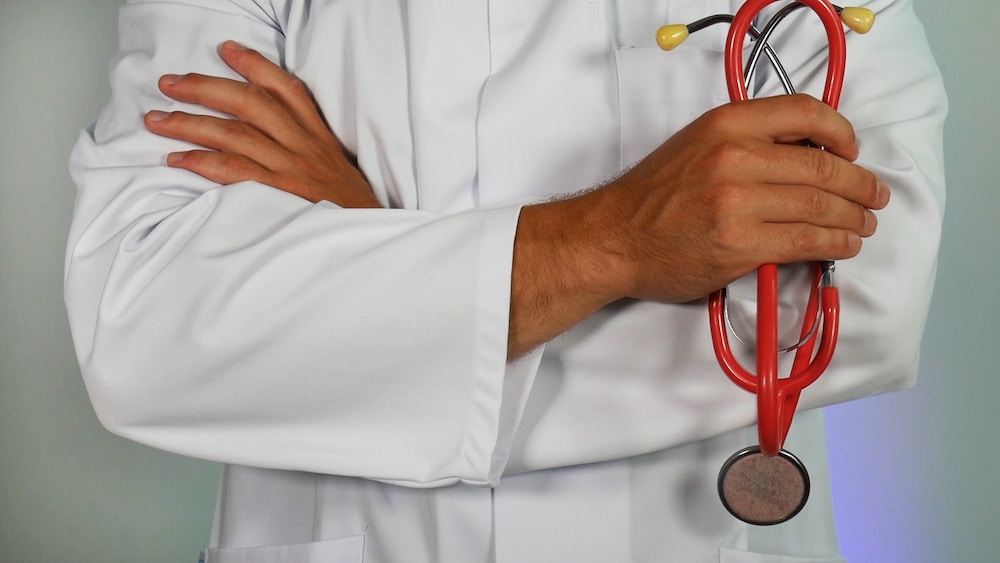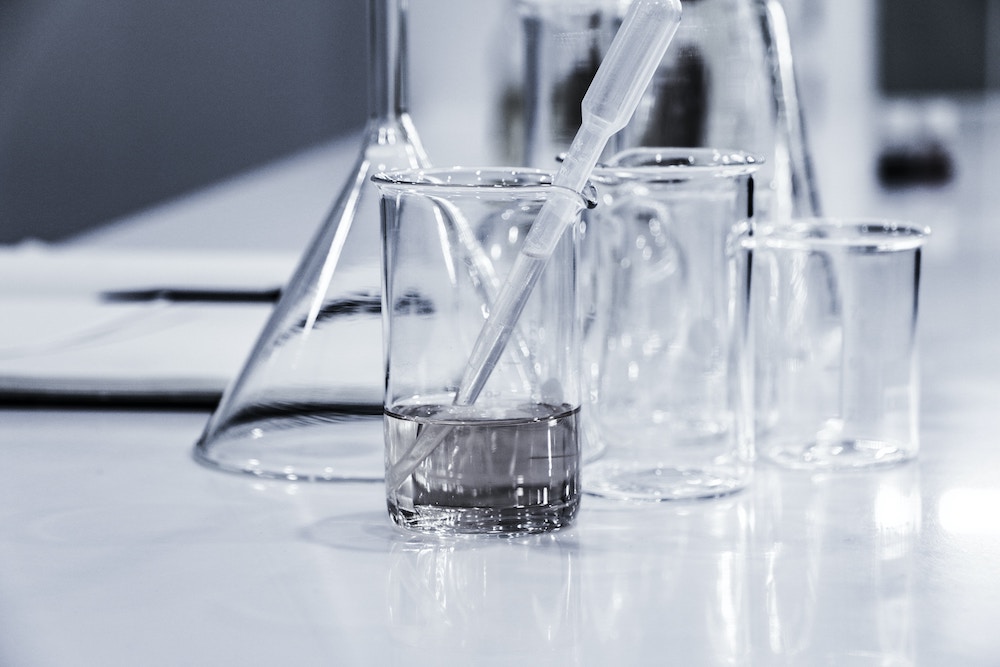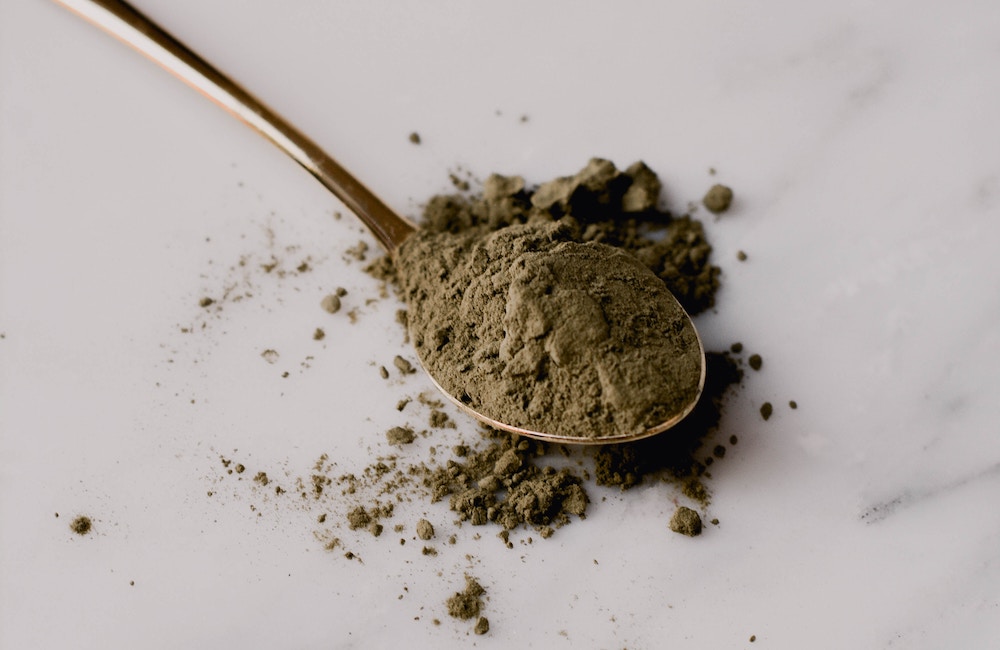I’m Colin. At age 15, I was on track to be a star athlete.
Then I had a fairly serious injury, and they put me on medication.
I didn’t know it at the time, but that was the beginning of my long journey to ibogaine treatment.
Over the next decade, I went from medical prescriptions, to buying pills off of friends, to using heroin.
Over time, I felt like I was a burden to my family and my friends, and I started to really hate myself.
I tried everything–Narcotics Anonymous meetings, expensive rehab facilities, and even moving out of my hometown.
I was able to break the addiction for a bit, but I always ended up going right back.
At the end of my rope, I found out about ibogaine treatment, and I decided to give it a shot. I felt like it was my last chance at redemption.

Similar Ibogaine Treatment Stories
My story resembles hundreds of stories I have heard from patients over the last decade. Somehow, something that starts off innocently turns into a habit and then total dependence.
Other stories, those going through trauma or suffering from depression, have their own beginnings but end up similar to mine.
Does it work for everyone? No, it doesn’t. But as an alternative for those who have tried traditional treatment methods unsuccessfully, ibogaine offers another opportunity for success.
In this article, I want to explore ibogaine treatment, how it works, the process of treatment, and who might benefit from it. By the end, you will be better educated about ibogaine treatment and whether or not it’s a good option for you or your loved one.
What is Ibogaine Treatment?
Ibogaine treatment is a medically supervised procedure where ibogaine is given to patients suffering from addiction, depression, or PTSD. During treatment, patients are monitored by EKG machines under the watchful care of a primary physician supported by a medical team of doctors and nurses.
Treatment lasts around 48 hours. Most patients in active addiction need 3-7 days of detoxification before taking ibogaine.
1-3 days after the ibogaine treatment is completed, most patients are fully recovered and ready to leave the clinic.
Now let’s dive deeper into how ibogaine works and what conditions ibogaine is effective for treating.
How Does Ibogaine Treatment Work?

Ibogaine is a psychoactive medicine with healing properties.
This makes treatment with ibogaine a unique approach for those suffering from various conditions. Where most treatment methods typically focus on one area, ibogaine works on three different areas simultaneously.
- Physical (Functionality)
- Mental (Perspective)
- Spiritual (Purpose)
Let’s look at each of these individually.
Physical Treatment
Ibogaine treatment works in the brain to reset functionality and help promote physical healing.
The person experiencing addiction is physically dependent on a substance. Removing that substance from the body causes withdrawal symptoms (fatigue, vomiting, insomnia, etc.).
It can take a substantial amount of time to recover from this physical addiction.
Ibogaine works to heal parts of the brain that cause physical addiction and dependence, giving the brain a reset and shortening, or eliminating, the withdrawal process.
Secondarily, ibogaine physically creates a state of openness and acceptance in the user which helps aid in the mental treatment process.
Here are some specific ways ibogaine works in the brain:
- Neurotrophic Factors–The “neuroplasticity” effect promotes cell growth and helps modify conditioned responses to past beliefs and experiences.
- NMDA Antagonism–Interrupts feedback loops and reward pathways altered by heavy drug use.
- Serotonin and Dopamine Agonism–Improves mood, mental stability, and helps normalize natural chemical production that produces feelings of happiness and satisfaction.
This is how ibogaine works on the physical brain. Now let’s look at ibogaine’s mental therapy.
Mental Treatment

The psychedelic experience from ibogaine works on the mental level to help with perspective and acceptance. Especially when it comes to trauma.
Trauma is often a root cause of all the struggles ibogaine helps address. Both PTSD and addiction can be rooted in trauma.
While ibogaine works in the physical brain to promote acceptance, it also takes users on a journey where they may face past experiences that caused the underlying trauma.
With this new, open mindset, users describe watching their life from an outsider’s perspective. They can detach and revisit these experiences that were once frightening or difficult.
This new approach to trauma helps individuals find a fresh perspective, learn new lessons, and ultimately move on feeling unified with their past, present, and future.
Spiritual Treatment
Lastly, ibogaine treatment works on the spiritual level to help inspire feelings of enthusiasm and hope.
Through the experience of ibogaine, many awaken feeling inspired, alive, and capable. This gives individuals a sense of purpose.
Perhaps this is simply a feeling of positive changes in brain chemistry, serotonin and dopamine functionality, and addressing traumatic experiences.
Or it may be something on a deeper level.
What matters is that ibogaine can help an individual feel complete on a spiritual level and excited to move forward and take control of their life and their future.
This process of ibogaine on the physical, mental, and spiritual levels helps those struggling with addiction, depression, and PTSD find healing and meaning in unique ways.
Conditions and Success Rates

Several scientific studies have been conducted on ibogaine as a treatment for various drug addictions and conditions.
Let’s look at some of the most common conditions treated by ibogaine and the effectiveness of ibogaine.
Addiction
Because of ibogaine’s unique way of addressing addiction and dependence in the brain, addiction treatment has been the most common application of ibogaine treatment.
Here is a list of addictions ibogaine is most effective at treating:
- Heroin and Opiates
- Alcoholism
- Methamphetamine
- Cocaine and Crack
- Tobacco
Ibogaine has a specific method of action that makes it tailored for treating heroin and opiate addiction. Furthermore, studies have shown ibogaine to be effective for all of the addictions listed above.
Let’s look at the results of one more recent study on opiate addiction, focused on daily opioid users.
- 4+ year daily opioid users
- 80% reported “eliminated or reduced withdrawal symptoms”
- 41% reported 6+ months of abstinence
- 30% reported “never using opioids again”
- 25% reported a “reduction in craving lasting at least three months”
There have also been several studies on ibogaine for alcoholism, methamphetamine use, as well as cocaine and crack addiction. Each study showed similar results.
Traditional approaches like alcoholics anonymous show success rates between 5 and 10 percent.
Compared to these methods, ibogaine looks promising.
Ibogaine offers a significant reduction in withdrawals for nearly all who use it. Months of abstinence for many of those who take it and potentially a lifetime of abstinence for a significant portion (30% or more).
Recovery rates demonstrate that ibogaine is potentially the most effective treatment approach when compared to other methods available today–especially for addiction.
Depression

There are very few studies on ibogaine for depression. However, ibogaine has been shown to reduce underlying causes of depression.
In one study, a patient suffering from depression reported “increased mental clarity, organized thinking, and positive prospects regarding the future,” with positive effects lasting 90+ days.
The study continues, “The use of ibogaine and other psychedelics [offers] significant reduction in symptoms of mental disorders, including depressive disorders.”
Other psychedelics, like psilocybin, also show promise for treating depression. More research is needed to determine if ibogaine can provide outcomes superior to other psychedelics.
However, ibogaine treatment may help those with depression looking to experience this medicine in a medical setting.
PTSD
Psychedelic therapy, specifically ibogaine treatment, is increasingly being used to treat PTSD. Those struggling with PTSD–often associated with veterans in the military but not always–have found ibogaine to be an effective treatment method.
The way ibogaine works in the physical brain, as well as the psychedelic experience of ibogaine, work to help the individual confront and address traumatic events from their past in ways that traditional treatment methods cannot.
One study showed that ibogaine helped treat PTSD by reducing these symptoms:
- Suicidal Tendencies
- Symptoms of PTSD
- Depression
- Anxiety
This study continues, “Participants rated the psychedelic experiences as one of the top five personally meaningful, spiritually significant, and psychologically insightful experiences of their lives.”
They also reported an increase in “psychological flexibility,” or an improvement in their ability to deal with past experiences and trauma.
These studies were specific to trauma and PTSD. We can see how successfully treating trauma may help address the underlying causes of depression and addiction as well.
Together these studies show ibogaine to be an effective treatment for these conditions.
Now let’s look at the process of ibogaine treatment, the phases of treatment, and how treatment for different conditions will differ from others.
Treatment Process

The process of ibogaine treatment is unique to each individual and their situation.
Generally, ibogaine treatment consists of four phases and an optional fifth.
They are as follows:
- Prescreening
- Detox
- Treatment
- Recovery
- (Optional) Aftercare, Coaching, and Therapy
Let’s look at each of these phases of treatment and how they differ depending on the individual.
Prescreening
No matter what your situation, prescreening is necessary before taking ibogaine. Ibogaine can be dangerous when mixed with other drugs or for those with certain heart, liver, or other health conditions.
Before attending a facility, you will likely fill out an application or a medical form with information about your health and medical history. Providing this information will help ensure you don’t waste time and money traveling to a clinic that cannot treat you because of pre-existing conditions.
Upon arrival, the clinic’s medical staff will run a series of tests, including bloodwork, EKG, liver enzyme, and other simple medical tests to ensure you are healthy enough to take ibogaine.
At this time, individuals taking ibogaine for PTSD or depression will likely be cleared and begin preparing for treatment.
Individuals seeking drug treatment will likely have substances in their system and need time to detox before ibogaine treatment.
Detox

The next phase of ibogaine treatment involves detoxing from harmful drugs before taking ibogaine.
Most addictive drugs must be out of the system to prevent them from nullifying ibogaine’s healing properties.
Also, ibogaine can be dangerous with certain drugs still in the system. Taking ibogaine before detoxification can lead to complications or even death.
Years ago, individuals on opiates and heroin could take ibogaine immediately after arriving at an ibogaine treatment clinic. This made things simpler.
However, with the rise of fentanyl, now almost every heroin or opiate user needs time to detox before taking ibogaine. Fentanyl blocks ibogaine from working properly and must be detoxed from the system, and if you aren’t sourcing opiates directly from a pharmacy, then you are almost certainly using fentanyl.
Here is the typical detoxification timeline for each specific drug:
- Fentanyl: 5-7 Days
- Alcohol: 3-7 Days
- Methamphetamine: 3-5 Days
- Cocaine or Crack: 3-5 Days
- Kratom: 3-5 Days
- Suboxone: 30-45 Days
- Methadone: 30-45 Days
Timing may vary greatly depending on your usage amount, health, and how your body naturally processes the drugs you are taking.
During detox, individuals may be placed on a medical-grade opiate to keep them comfortable. Fluids and supplements are administered through medical IVs to speed up the process.
Heavy alcohol users also may need specialized medication to help stabilize liver enzymes before ibogaine treatment.
Each day, a blood sample is taken and sent to a nearby lab for accurate drug testing.
Once the individual’s system is clean and ready, they can begin treatment.
Ibogaine Treatment and Administration

After being medically cleared to take ibogaine, treatment begins.
There are three methods of ibogaine treatment used today:
- Flood-Dose Method
- Low-Dose Protocol
- Low-Dose Protocol with Flood
Let’s look at each method.
Flood-Dose Method
The flood-dose method uses the maximum dose of ibogaine taken all at once.
Flood-dose treatment usually begins with fasting for 8-12 hours before taking ibogaine.
At some facilities, light breath-work or simple shamanic rituals may be a part of the experience.
An individual will lay in bed, hooked up to a heart monitor, and then take a small test dose of ibogaine in capsule form.
Medical staff with them wait one hour to make sure there are no allergic or other negative reactions to the ibogaine test dose.
Patients then take the full flood-dose of ibogaine through a series of capsules filled with pure ibogaine hydrochloride.
Over the next 8-12 hours, most users will experience the intense, dream-like state brought on by the ibogaine. Expert physicians and medical staff assist them and use medical equipment to monitor for potential issues.
Once the intense experience passes, users are free to walk around the facility while monitoring continues.
Total treatment time from test dose to release is typically 24-36 hours.
Low-Dose Protocol

Some modern ibogaine clinics use the low-dose protocol because of its unique ability to treat fentanyl, Suboxone, and methadone users. This approach may also be safer, although studies have not specifically determined this.
With a low-dose protocol, individuals take small doses of ibogaine over a longer time period–usually 7-10 days.
This method allows ibogaine to be in the system for a longer period of time, which may help eliminate withdrawals more effectively. It may also offer more time for ibogaine to heal and regenerate receptors and other parts of the brain affected by heavy drug use.
The downside of the low-dose protocol method is most individuals will not have a pure psychedelic experience with this approach.
Not all clinics offer the low-dose option.
Low-Dose Protocol with Flood
The last ibogaine administration method mixes the benefits of the low-dose protocol with the flood-dose method.
When combining both methods, the individual takes ibogaine in small doses over 7-10 days.
The individual then takes the higher, or flood-dose, of ibogaine on the final day of treatment.
This offers the best of both approaches by giving users more time with ibogaine in their system while also experiencing the psychedelic effects of ibogaine.
Recovery

After treatment you will need time to recover.
Individuals typically remain at the clinic for 1-3 days after treatment to monitor them for any adverse side effects from the ibogaine.
Each individual reacts differently to ibogaine. Some are ready to go the next day feeling energized. Others will feel tired and groggy for a few days.
Both of these reactions to ibogaine are normal and usually pass within a few days.
Having a few days at the clinic can make all the difference before moving on to your next destination.
During recovery time, activities or other options may be available to you. Here is a quick list of potential recovery options:
- One-on-one therapy
- Group therapy
- Walking or hiking trips
- Yoga or light exercise
- Guided meditation
- Reading
- Journaling
- Planning
- 5-MEO DMT experience
What’s important is that you take time to relax, gather your thoughts, and begin planning for the next phase of your life–whatever that might be.
Aftercare, Coaching, or Therapy

After completing ibogaine treatment, there is still work to be done. Options like aftercare, coaching, or therapy help individuals better prepare for long-term, successful outcomes.
Let’s look at post-treatment options and how they can help.
Aftercare
For those taking ibogaine for addiction, aftercare offers a chance to increase potential positive outcomes from treatment.
Aftercare involves attending a facility away from home with a program designed for those who have been through ibogaine treatment for addiction.
These programs often involve:
- High-level therapy
- Integration
- Personal discovery
- Exercise plans
- Healthy eating
- Coaching
- Emotional support
- Community
On top of these benefits, aftercare programs simply give you more time away from drugs, alcohol, and negative influences to help build a stronger foundation for life.
Time spent at an aftercare facility helps drastically increase positive outcomes for those struggling with addiction and should be considered by anyone taking ibogaine for addiction.
Coaching
Whether coaching follows time at an aftercare program or starts immediately after treatment, it can offer another layer of support for those going through treatment for addiction.
Coaching involves regular phone calls, often with a trained counselor, where you can discuss goals and progress.
This level of support is helpful when overcoming addiction. Even though ibogaine treatment helps, it requires effort and goal-setting by the individual to make the change permanent.
Coaches are there for you regularly. They give you someone to talk to, someone on your side. They offer insight and support.
This provides another layer of protection against relapse for those recovering from addiction.
Therapy
For those going through PTSD, depression, or even addiction, there is no replacement for regular sessions with a highly experienced therapist.
Like a coach, a therapist offers insights and support.
However, therapists usually have higher levels of training and experience.
Therapists offer coping mechanisms, techniques, and approaches that are invaluable for a full recovery. They also offer time in person, which may be more effective than time on a phone or Zoom call.
We highly recommend anyone returning home from ibogaine treatment consult a licensed therapist to further their recovery.
Now that we understand the full process of ibogaine treatment, let’s discuss the risks.
Risks

Ibogaine offers positive outcomes for many struggling with PTSD, depression, or addiction. However, even with medical supervision and intervention, ibogaine may still put individuals at a higher risk than other methods.
The uncertain effects of ibogaine may be a reason it is generally used after traditional treatments have failed.
Let’s look at the risks of taking ibogaine.
Heart Conditions
The majority of negative outcomes from ibogaine are related to the heart and underlying heart conditions. Ibogaine prolongs qt intervals in the heart, making those with pre-existing heart conditions more susceptible to risks.
This is why medical ibogaine clinics require rigorous pre-screening and testing, as we previously discussed.
No one with a history of heart conditions or heart surgery should consider taking ibogaine. The risks are simply too great.
Substances
The second risk factor comes from mixing ibogaine with other illicit substances like methamphetamine, alcohol, cocaine, Suboxone, or methadone.
When mixed with ibogaine, these drugs lead to major complications.
Similar to heart conditions, clinics reduce these issues with careful pre-screening, testing, and detoxification before taking ibogaine.
General Risk
Although unfavorable outcomes from ibogaine treatment are limited with medical oversight, there are still risks that scientists still do not fully understand.
One of the leading scientists on psychedelics and ibogaine, Dr. Kenneth Alper, explains, “Figures give a ratio of 1 ibogaine-related death to every 427 treatment episodes.”
Today, there is a risk of death associated with taking ibogaine not attributable to any specific underlying condition or drug interaction.
These risks should be considered before taking ibogaine. It is very important that ibogaine is never taken without proper medical supervision.
Let’s conclude with some information about the legality and where ibogaine treatment is available today.
Where Can I Get Ibogaine Treatment?

Because of legal issues, there are only a handful of locations where ibogaine treatment is available.
Today, the majority of ibogaine clinics are in Mexico. However, here is a list of the most common countries where you can find ibogaine treatment:
- Mexico
- Bahamas
- Costa Rica
- Portugal
There are three primary clinic categories:
Medical Clinics–Specialized locations, usually a home or a small hospital, where doctors and nurses administer ibogaine while monitoring patients with medical equipment.
Retreats–Open locations where doctors may be present. Individuals take ibogaine in a more shamanic setting as opposed to a medical one.
Medical Retreats–A mix of both medical and retreat environments where patients spend time in a more open environment before taking ibogaine in a medical facility.
Each of these has its pros and cons. The cost of ibogaine treatment will also vary partially based on these factors.
Retreat-style locations are often for those without medical conditions. They will often not consider individuals suffering from severe addiction or trauma.
However, for those looking for a more shamanistic experience or looking to take ibogaine or iboga for spiritual or personal reasons, retreats may be an option to consider.
For those treating medical conditions with ibogaine, a medical clinic or a medical retreat is preferred.
Is Ibogaine Treatment Right for You?
For me, ibogaine was one of the best decisions I ever made. But my situation differs from yours, and I can’t tell you if ibogaine is right for you specifically.
This is a decision each individual needs to make on their own or with a medical professional.
Everyone deserves to find freedom from the issues that make life difficult. Ibogaine may be a good solution for those who are struggling.
To find out if you qualify for treatment, fill out an application here, and we will get back to you.
I wish you the best on your journey.


